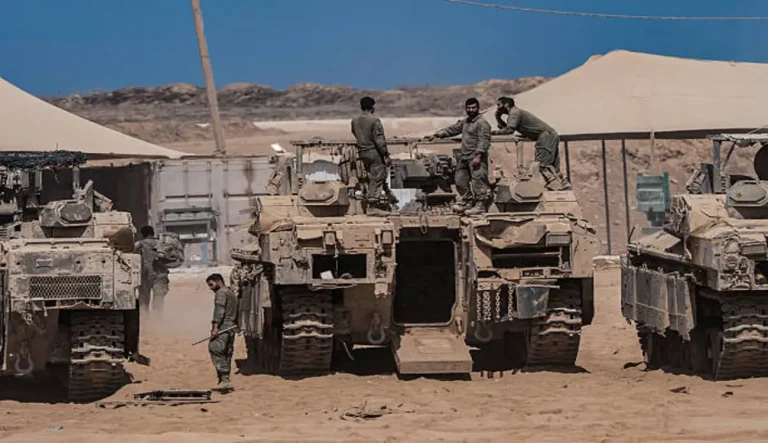
People react at Hostage Square in Tel Aviv on October 9, 2025, after Israel and Hamas agreed a Gaza ceasefire deal. Maya Levin AFP
Jerusalem, Israel (Epicstorian News) —Israel and Hamas signed a deal to pause fighting and arrange a staged hostage-prisoner exchange, according to negotiators familiar with the process.
Details of the accord, including border logistics and verification procedures, were reviewed by regional mediators and aligned with international humanitarian standards outlined in
global Middle East conflict frameworks.
Israel and Hamas ceasefire terms include phased troop withdrawals
The pact specifies a partial Israeli pullback from designated Gaza sectors as the first phase of the ceasefire, consistent with prior United Nations-endorsed de-escalation proposals.
Officials said hostages held in Gaza are to be released within 72 hours after the agreed 24-hour ratification window.
Negotiators described a list of prisoners for release that remains under final review by the parties.
Israel and Hamas agreement allows expanded humanitarian access and truck convoys
The accord allows large convoys of food, water and medical supplies to enter Gaza via agreed crossings.
Humanitarian coordinators welcomed the opening of aid corridors and urged rapid implementation of logistics plans.
Military spokespeople confirmed preparations on the ground included measured repositioning and removal of certain field equipment.
Civilians in both Gaza and Israel gathered at public squares and shelters to await formal announcements from leaders.
Family members of hostages expressed relief and described cautious optimism as lists and logistics were clarified.
One negotiator confirmed mediators provided guarantees for the initial exchange timetable and monitoring mechanisms.
Another official outlined that subsequent phases of the wider plan remain subject to separate negotiations and guarantees.
Leaders in regional capitals convened planning sessions to discuss peacekeeping proposals and reconstruction funding schemes.
Security ministers warned that the deal’s durability will depend on strict verification and compliance by both sides.
Analysts said the agreement represents the most comprehensive pause in hostilities since the conflict escalated two years ago.
Medical authorities in Gaza reported fewer strikes on the day the accord was signed and said casualty numbers fell compared with recent weeks.
Witnesses in central Gaza observed movement of aid trucks and signs of reduced frontline activity near key corridors.
Military observers in the field reported limited engagements in specific zones while forces prepared to reposition.
Negotiators tasked with overseeing the exchange described inspection and escort arrangements for transported hostages and released prisoners.
One family member of a hostage said they had been waiting for confirmation of the identity and condition of released detainees.
Diplomatic aides confirmed that high-level envoys will travel to the region to supervise implementation of the first phase.
Parliamentary leaders in Israel prepared urgent sessions to consider immediate ratification of the agreement to start the 24-hour countdown.
Parties to the deal agreed to post-implementation reviews and to convene talks on governance and security arrangements for Gaza.
Humanitarian officials urged rapid clearance of checkpoints and bureaucratic hurdles that could delay aid delivery.
Community leaders in Gaza and Israel appealed for calm and urged citizens to avoid demonstrations that might jeopardize the exchange.
Observers cautioned that lists of eligible prisoners must be finalized promptly to avoid breakdowns in trust between negotiators.
Related: UN Braces for Largest Aid Operation in Gaza as Ceasefire Opens Borders
Legal advisers discussed procedures for verifying identities and medical conditions of those being exchanged under escort.
International planners outlined reconstruction timelines that will follow a confirmed and sustained cessation of hostilities.



